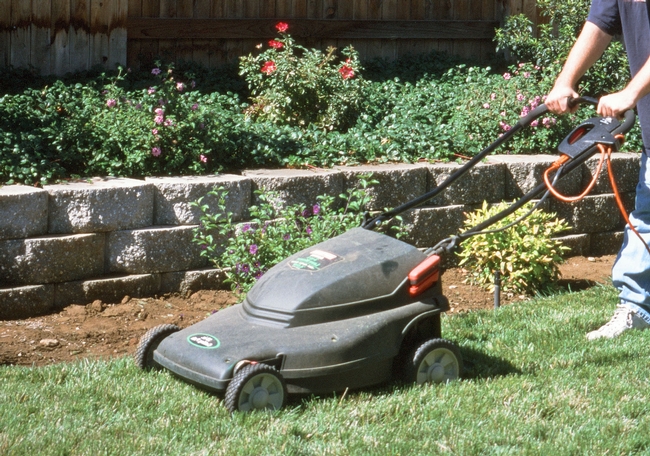Grasscycling can help Californians conserve water
In short, grasscycling involves leaving grass clippings on the lawn, rather than collecting them in a bag and shipping them off to a landfill.
“The clippings sift down to the soil surface and act like a mulch, reducing water evaporation so you can cut back on irrigation,” said Karrie Reid, UC ANR Cooperative Extension environmental horticulture advisor in San Joaquin County. “This is a simple and elegant way to save water that requires very little extra effort.”
If you don't have a mulching mower, Reid says, “It's probably time to replace the mower.” As an alternative, a mulching blade can be attached the bottom of most mowers. The special blade makes a second cut when mowing over grass, cutting grass clippings into finer pieces.
In most California climates, mowing once a week with a mulching mower is sufficient. If grass is growing so quickly a once-per-week mowing cuts off more than one-third of the blade, it's a sign that too much water is being applied.
In addition to reducing water use, grasscycling cuts down on fertilizer needs.
“As the clippings break down, nutrients are returned to the soil,” Reid said. “Most of the fertilizer that is applied to lawns ends up in the leaf blades, so it only makes sense to retain as much of that on the lawn as possible.”
A five-page UC ANR publication on mowing and grasscycling is available for free download from the UC ANR Catalog. The publication includes a table with mower height settings for the most common types of turf grass grown in California.
In addition to working with horticulture professionals, Reid serves as advisor to the coordinator and volunteers of the UC Master Gardener program in San Joaquin County. Master Gardeners are UC ANR volunteers who are trained by UC academics in sustainable landscape, ornamental tree and garden development and maintenance.
More than 6,000 volunteer Master Gardeners form a network to disseminate research-based gardening information across the state, donating upwards of 350,000 hours of time each year.
An initiative to improve California water quality, quantity and security is part of the UC Division of Agriculture and Natural Resources Strategic Vision 2025.



Posted by Didrica verhoorn on March 5, 2015 at 6:33 PM